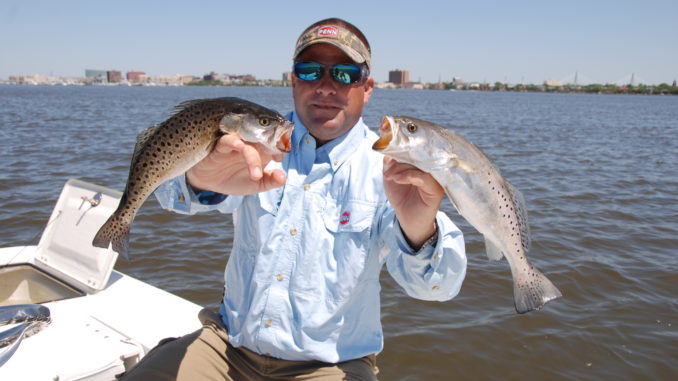
While most of you are humming that song from “The Lion King”, the circle of life for speckled trout begins in South Carolina marshes when two environmental factors signal mature trout that it’s time to get busy.
Increasing photoperiods — the amount of daylight in a 24-hour period — and water temperatures hitting the 70-degree mark trigger production of eggs in female trout and sperm in males. This typically occurs in mid-April, but it can be as early as March if the spring has been especially warm, and it may last through the summer.
Salinity is often mentioned, but it’s not a key to triggering spawning, but of egg survival, because eggs float better in water with higher salinity and sink to the bottom and suffocate in less than around 12 ppm salinity.
Trout are also known to spawn more vigorously on higher tide cycles as tides can push the fry back into more protected areas.
Trout will spawn multiple times as long as water conditions remain favorable. Fertilized eggs develop quickly and may reach fry stage in as little as four weeks.
It’s a good thing that trout spawn so vigorously, because the fry are food for anything and everything that swims, including their own kind.
Males carry the burden of reproduction, fertilizing eggs every 24 to 36 hours, with not much time in between to eat, while females can resupply eggs every two to five weeks though the summer, allowing time to feed in-between. This is one reason why trophy speckled trout are almost always female, because of advanced growth rates compared to males.
Probably the factor that is most-limiting to the recruitment of speckled trout is not predation, but lack of suitable habitat. The average female lays a million eggs a season. Multiply that by the hundreds of thousands of trout in our system.
Another factor is catastrophic losses by environment, meaning extended periods of cold weather that stun and kill temperature -sensitive trout. When mature trout are trapped in a shallow area and the temperature drops suddenly, cold shock can and has killed off major stocks. Fortunately, this has not been the case for the last fur to five years. Along with reasonable harvest by anglers, this might explain why the trout fishing has been historically good the past few years.





Be the first to comment